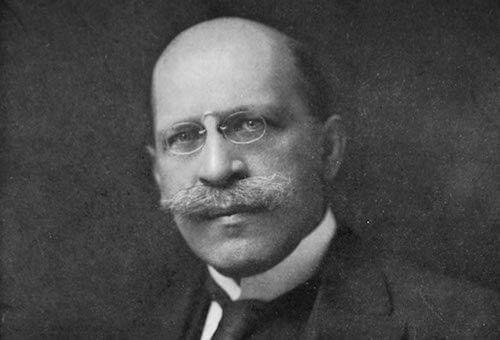What Is Applied Psychology?


Written and verified by the psychologist Valeria Sabater
You could think of psychology as a large tree with countless branches, all trying to understand human behavior. In this chaos of leaves and branches, there is one that stands out. We are talking about applied psychology. Applied psychology tries to find concrete solutions to problems we encounter in our everyday lives.
Maybe you’re asking, isn’t that what psychology has always done? Hasn’t this science focused on helping and finding answers to the most common and complex human needs from the beginning? Well, actually no.
“Intelligence consists not only of knowledge, but also the skill to apply that knowledge in practice.”
-Aristotle-
In the beginning, psychology was more focused on collecting information and understanding psychological processes. We are talking about basic processes like attention, memory, learning, or language. We call this exciting, immense, and constantly expanding field “basic psychology.”
It wasn’t until the end of the 19th and beginning of the 20th century when psychology took another leap forward. This was thanks to a German-American psychologist named Hugo Munsterberg. Munsterberg helped direct this broadly defined science towards the search for practical solutions.
With all of the knowledge that basic psychology generated, the field expanded to transforming lives and enhancing people’s health, learning, and well-being. As you can see, it’s nearly impossible to think about these two areas separately.
Basic psychology and applied psychology are two fundamental branches of the same tree. And this spectacular tree will never stop growing and finding new ways to improve our lives.

Hugo Munsterberg: a founder of applied psychology
Hugo Munsterberg used to read Kant. He also had a good relationship with William James, who invited him to work with him in the psychology lab at Harvard University. However, things between the two didn’t end well.
They say that William James had an interest in researching paranormal activity. Munsterberg, a disciple of Wilhelm Wundt and a strong believer in objectivity and practicality, could not understand or accept that side of James.
Munsterberg cataloged everything that wasn’t logical and tangible as “the psychology of abracadabra.” His primary interest at the time was to improve the productivity of businesses. Maybe that’s why he always felt a certain tension with his academic colleagues.
They understood psychology strictly within a laboratory setting. Their perspective was limited to observation and experimentation, with an end goal of publishing an article and maybe challenging a colleague’s theory.
The reason that Hugo Munsterberg laid the foundation for applied psychology was a very specific one. He wanted to improve the abilities of workers during a time when industry and scientific management (or Taylorism) demanded new skills. The system wanted more prepared and able workers for a more complex work environment.

So, in spite of the fact that Munsterberg passed away when he was barely 50, his contribution to the field of psychology was significant. Most noteworthy, he established industrial psychology and multiple tests evaluating professional ability. He even laid the foundation for judicial psychology by creating a scale for testing the trustworthiness of witnesses.
The different aspects of applied psychology
We said at the beginning that a large part of the tools and knowledge that applied psychology uses come directly from basic psychology. In practice, however, the application and development of a task always generate new knowledge, data, and concepts. The same is true for applied psychology. Applied psychology shows a certain independence from its sister branch of basic psychology.
Consequently, applied psychology also has an infinite number of realms of action. These areas deal with some of our most everyday circumstances. Thanks to applied psychology we can find solutions, enhance our abilities, improve processes, and innovate, etc. Let’s see some examples.
“…theory is very good indeed, but how are we to carry it into practice? If it be absolutely impracticable, no theory is of any value whatever, except as intellectual gymnastics.
-Swami Vivekananda-

Branches of applied psychology
- Health psychology. While it’s related to clinical psychology, they are two different disciplines. Health psychology analyzes the relationship between behavior and physical disorders. In addition, it tries to prevent and treat different illnesses.
- Clinical psychology. Focuses on preventing and treating dysfunctional behavior. The goal is to improve quality of life and mental well-being.
- Sports psychology. Seeks to enhance the performance of athletes by, for example, reducing anxiety and improving teamwork.
- Organizational psychology. This and clinical psychology are two of the best-known branches of applied psychology. In this case, the goal is to improve the work environment, solve problems, train, maximize skills, and manage organizations’ human capital.
- Educational psychology. Here, applied psychology uses basic psychology to improve learning and methodology. It aims to understand how students learn and provide them with the resources for their day-to-day lives.
- Environmental psychology. Seeks to understand how people relate to their surroundings and how the environment itself can affect our behavior.
- Forensic psychology. In this case, the work of the professional isn’t limited to crime research. They also analyze the validity of testimony, look at custody battles, provide care for victims, etc.
- Marketing psychology. We all know that marketing is an essential part of the consumer economy. Understanding what motivates the buyer to choose certain products and what kind of subconscious processes determine desires and needs are important parts of this interesting area of psychology.
In conclusion, each field is like a branch of applied psychology. There are many more fields that we could mention, like emergency psychology, traffic safety psychology, the psychology of aging, etc. These are just examples to show you just how many situations psychology is valuable in.
Bibliography
Münsterberg, Hugo (1914) “Psychology and Industry”. Psychology Press
Münsterberg, Hugo (2008) “Psychology and Social Sanity” Psychology Press
Muchin, Paul (1994) “Psicología aplicada”. Paidós
Olivares Rodriguez, José (2012) “El ejercicio de la psicología aplicada” Pirámide
This text is provided for informational purposes only and does not replace consultation with a professional. If in doubt, consult your specialist.








